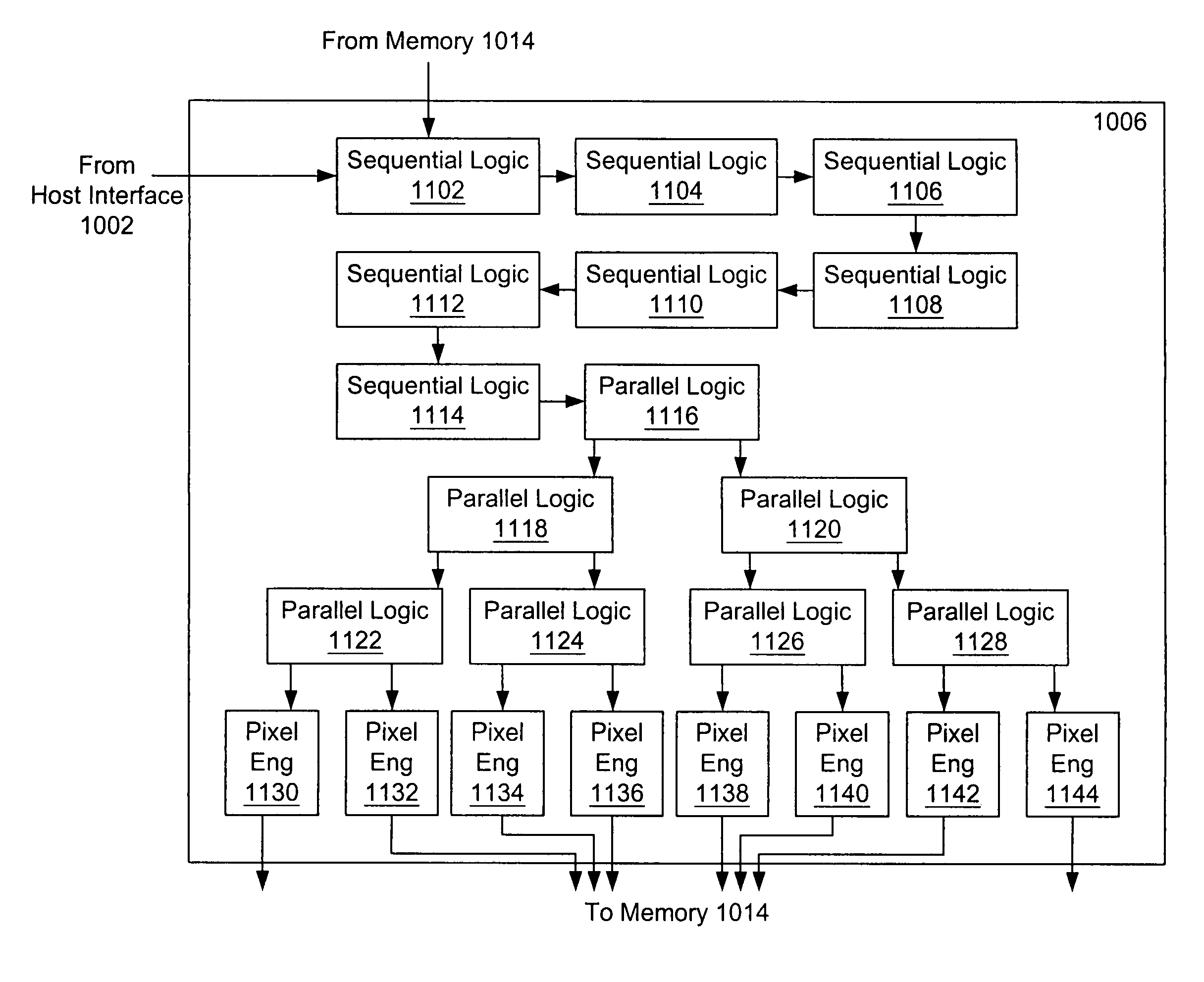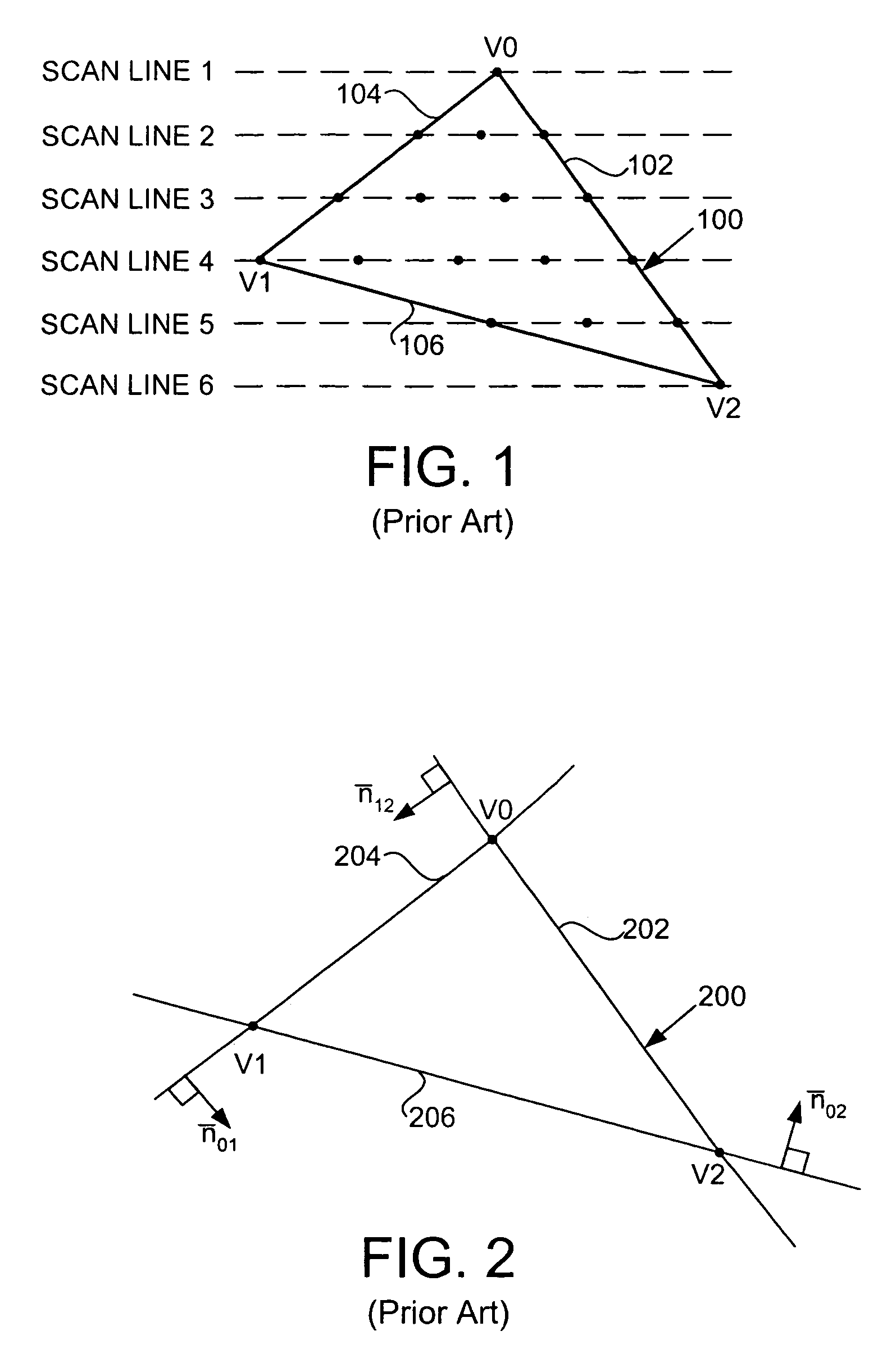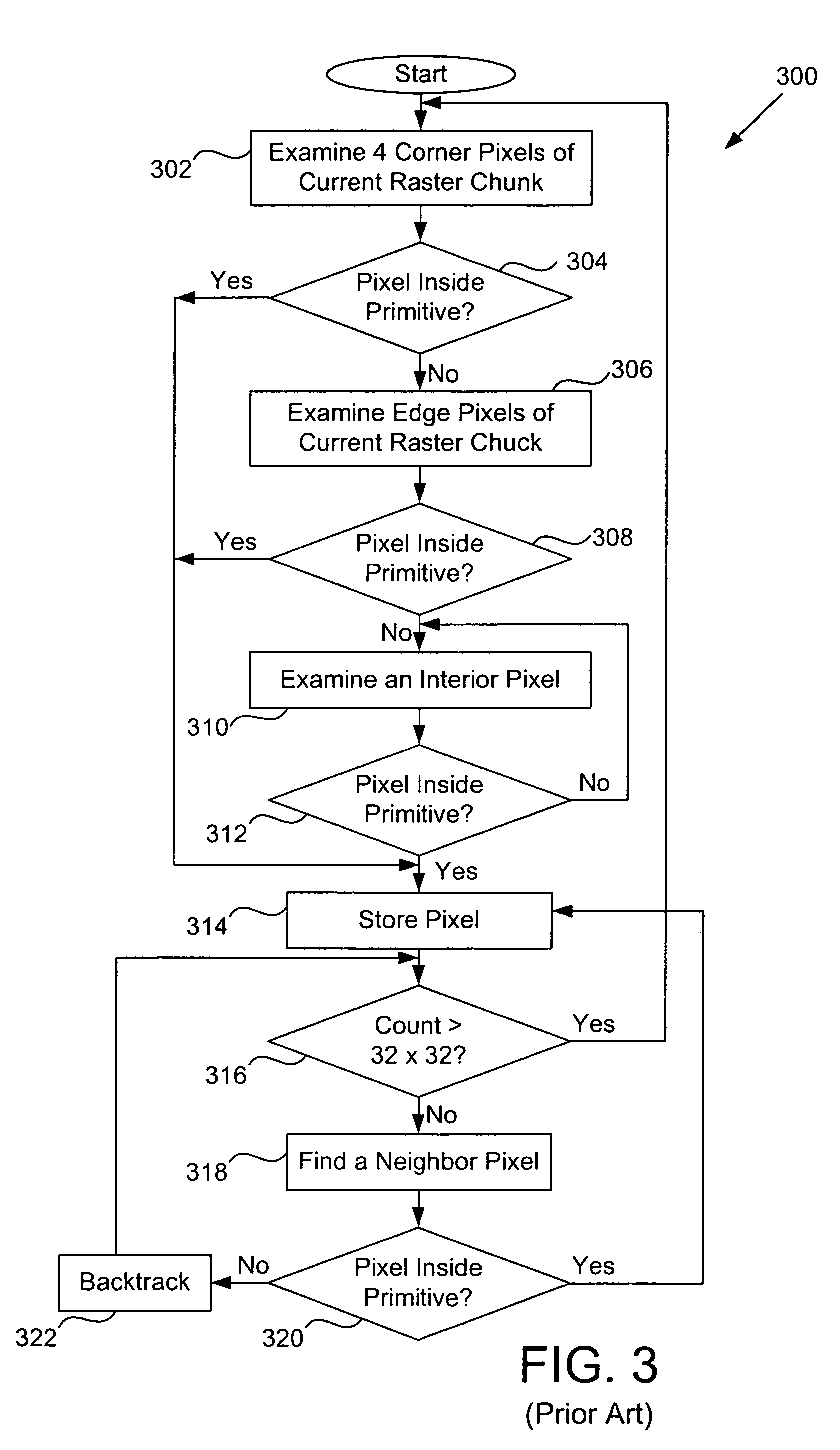Parallel architecture for graphics primitive decomposition
- Summary
- Abstract
- Description
- Claims
- Application Information
AI Technical Summary
Benefits of technology
Problems solved by technology
Method used
Image
Examples
Embodiment Construction
[0042]FIG. 4 is a block diagram of a computer system 400 for implementing the present system and method. The computer system 400 includes a central processing unit (CPU) 402, a system memory 404, and a graphics controller 406, all of which are coupled to a system bus 408. The system bus 408 may be any one of a number of different types of host or input / output (I / O) buses, including industry standard architecture (ISA), extended ISA (EISA), peripheral component interconnect (PCI), video electronic standard association (VESA) local bus, or any other standardized computer system bus. The system bus 408 may also be an accelerated graphics port (AGP).
[0043]The system memory 404 stores information, instructions, and software programs such as an application program, a graphics subroutine package and an operating system executable by the CPU 402. The application program may be used to construct two and three-dimensional graphics images and models. These images and modules are data structure...
PUM
 Login to View More
Login to View More Abstract
Description
Claims
Application Information
 Login to View More
Login to View More - R&D
- Intellectual Property
- Life Sciences
- Materials
- Tech Scout
- Unparalleled Data Quality
- Higher Quality Content
- 60% Fewer Hallucinations
Browse by: Latest US Patents, China's latest patents, Technical Efficacy Thesaurus, Application Domain, Technology Topic, Popular Technical Reports.
© 2025 PatSnap. All rights reserved.Legal|Privacy policy|Modern Slavery Act Transparency Statement|Sitemap|About US| Contact US: help@patsnap.com



